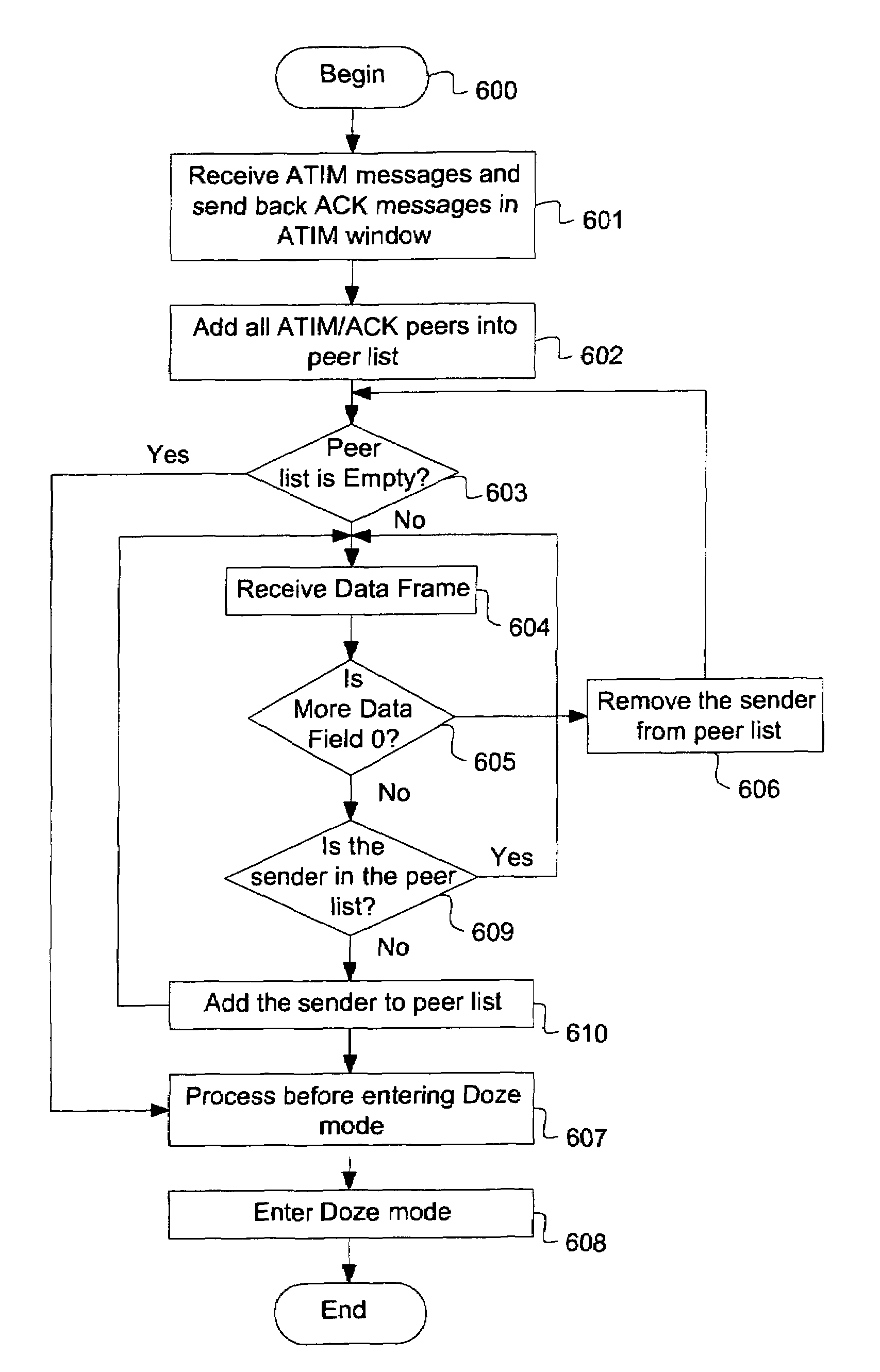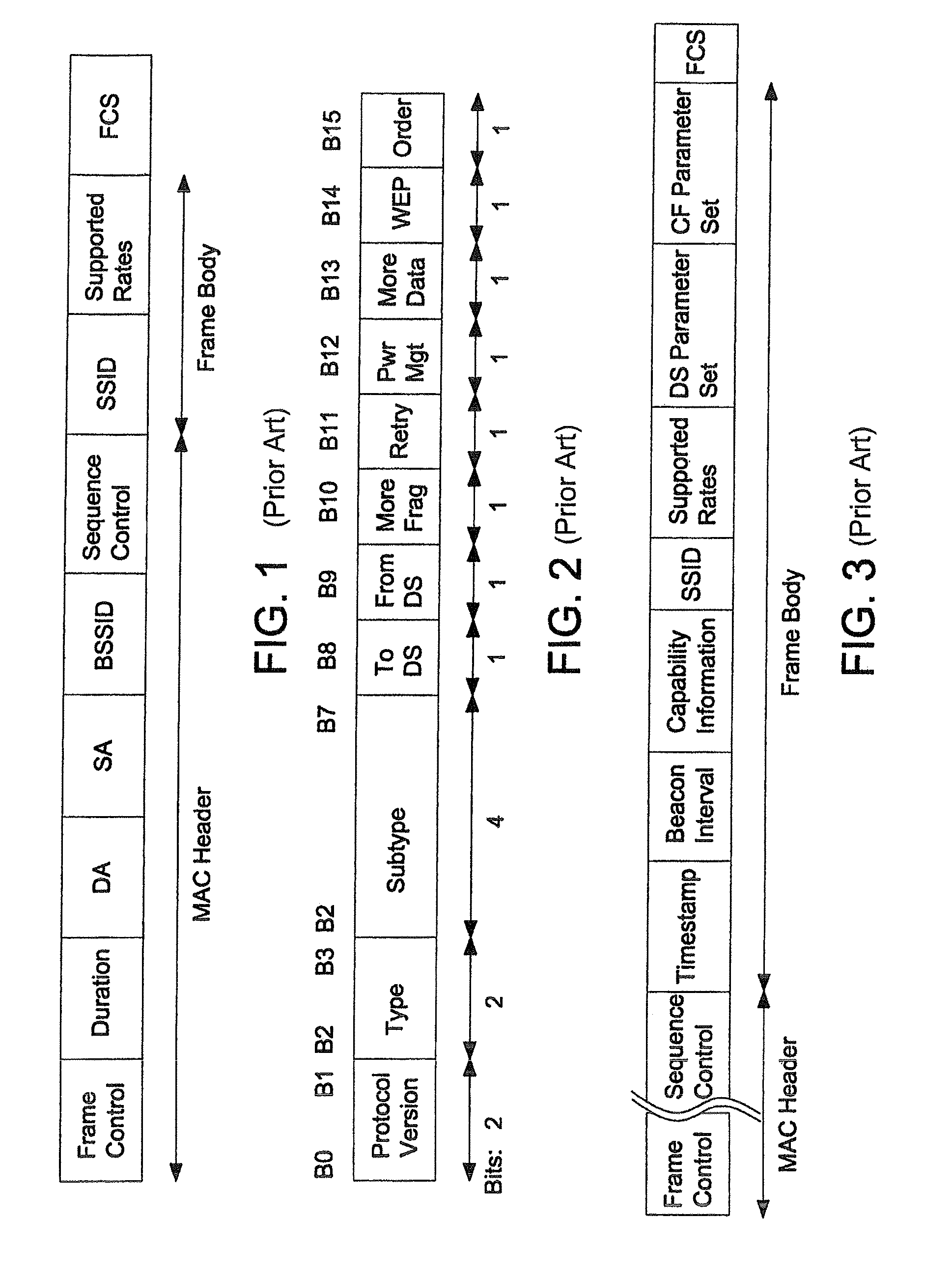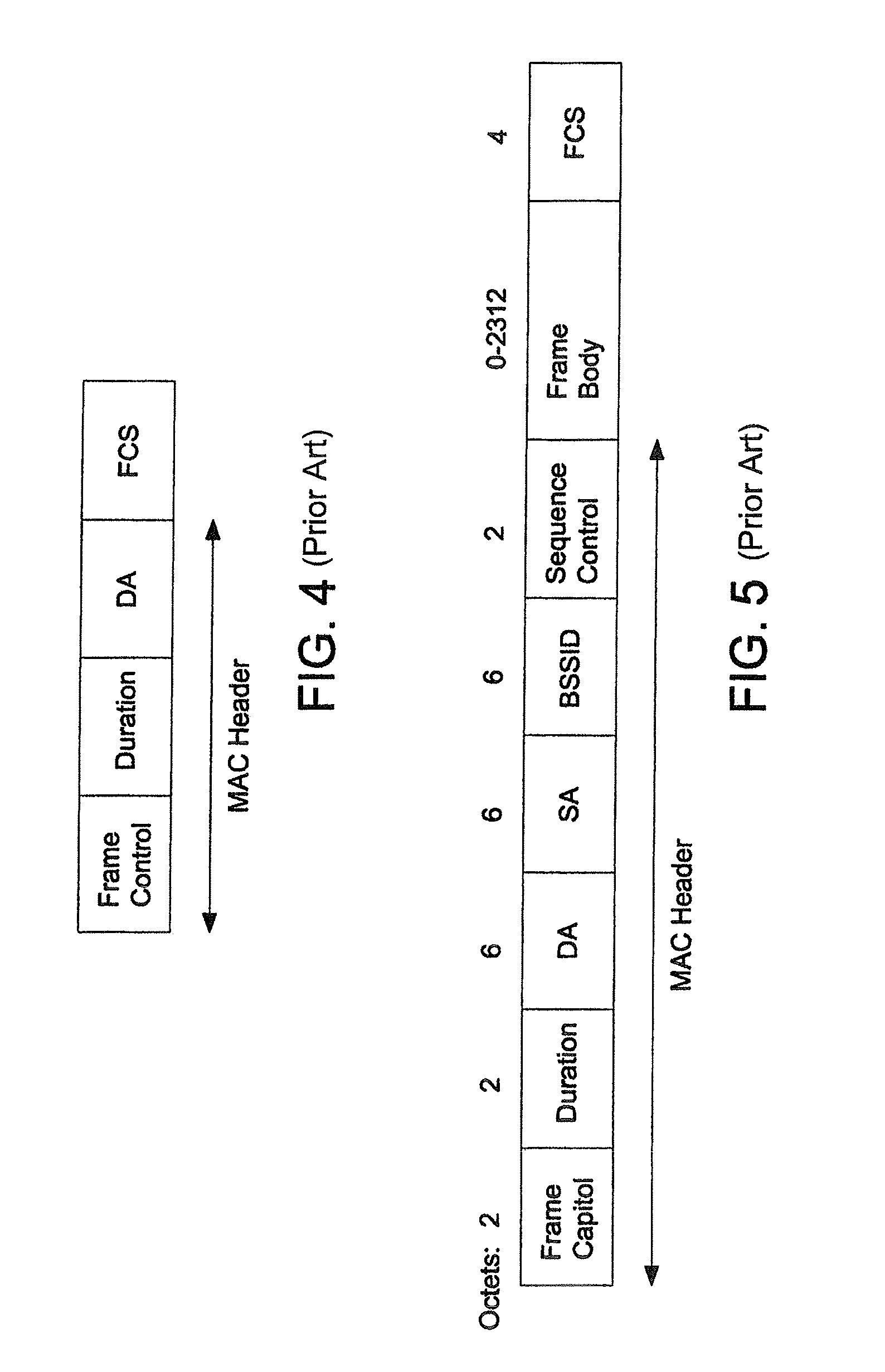Method and apparatus for power saving in beacon generation of wireless networks in ad hoc mode
a wireless network and beacon technology, applied in the field of wireless computer networks, can solve the problems of increasing power consumption, reducing the power saving effect of beacon generation, etc., and achieve the effect of increasing power saving
- Summary
- Abstract
- Description
- Claims
- Application Information
AI Technical Summary
Benefits of technology
Problems solved by technology
Method used
Image
Examples
Embodiment Construction
[0049]The present invention provides algorithms that optimize power-savings for active STAs (i.e., those wireless STAs sending or receiving messages) in an ad hoc wireless network.
[0050]In one embodiment of the present invention, STAs of an ad hoc wireless network send or receive only unicast ATIM messages within the ATIM window and do not operate in a promiscuous mode (i.e., in conformance with the practice under 802.11 standards). Under 802.11, based on an exchange of an ATIM frame and an ACK frame, the sender and receiver STAs may infer different internal states about each other:
[0051]
TABLE 2Sender and Receiver Internal StatesCase #SenderReceiverImplication1Sends an ATIMReceives an ATIMThe Sender and the Receiverframe correctly andframe correctly andbelieve that they are in thereceives an ACKsends an ACK framesame power state, andframe correctlycorrectlytherefore consider each otheras peers.2Sends an ATIMReceives an ATIMThe Receiver treats the Senderframe correctly, butframe corr...
PUM
 Login to View More
Login to View More Abstract
Description
Claims
Application Information
 Login to View More
Login to View More - R&D
- Intellectual Property
- Life Sciences
- Materials
- Tech Scout
- Unparalleled Data Quality
- Higher Quality Content
- 60% Fewer Hallucinations
Browse by: Latest US Patents, China's latest patents, Technical Efficacy Thesaurus, Application Domain, Technology Topic, Popular Technical Reports.
© 2025 PatSnap. All rights reserved.Legal|Privacy policy|Modern Slavery Act Transparency Statement|Sitemap|About US| Contact US: help@patsnap.com



